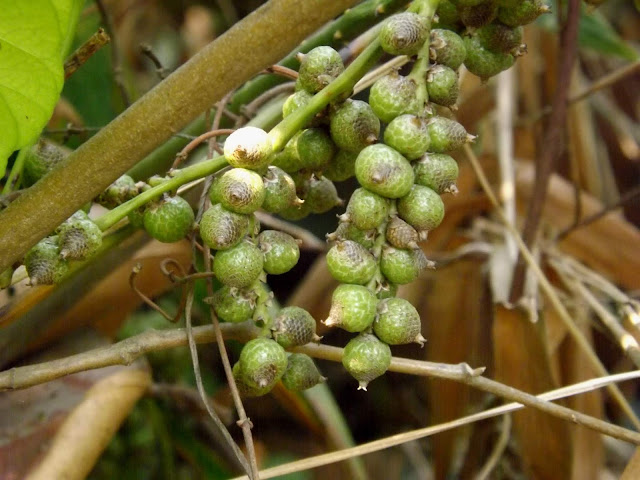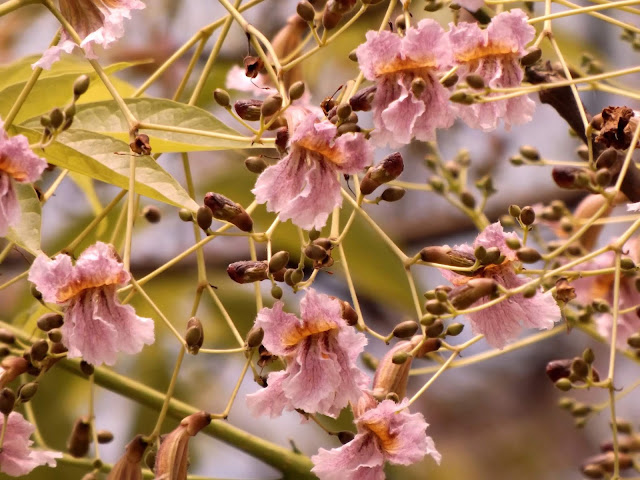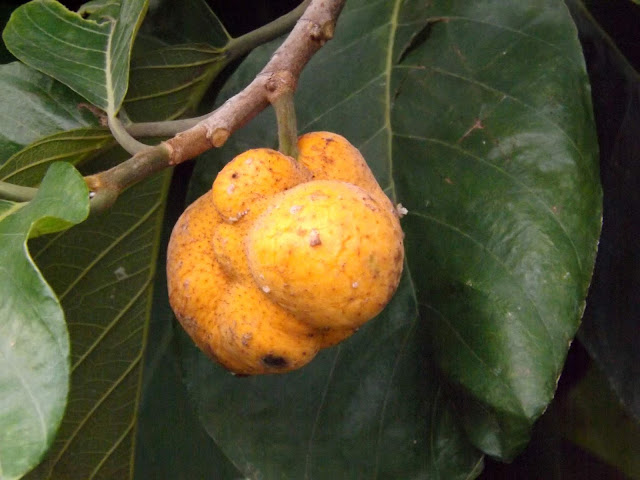Orun or Scarlet cordia, Cordia sebestena

Orun or Scarlet cordia ( Cordia sebestena ) is a small tree reaching a height of 5-8 m with branches. The original home of the plant is tropical America. It is found especially in Central America, Florida of USA and the Caribbean islands. It is famous for its spectacular orange-colored flowers throughout the tropical world. Leaves are elliptical, dark green, undulate, 15-25 cm long, petioled, opposite, rough and hairy, apex blunt. Petiole is about 2.5 cm long. Flowers are showy, scarlet orange, 5-5.5 cm wide, tubular in the lower part, borne loosely on racemes at the tip of the branches. Petals are much bigger than the sepals. Petals 5-6. Flowers bloom throughout the year but profusely during Jan-March. Fruits are pear-shaped, almost like small-sized Guava, scented, 5-6 cm long. Those are edible but tasteless. The plant is propagated from seeds. It is planted in gardens, parka and botanical gardens in Bangladesh. The beautiful exotic tre...






